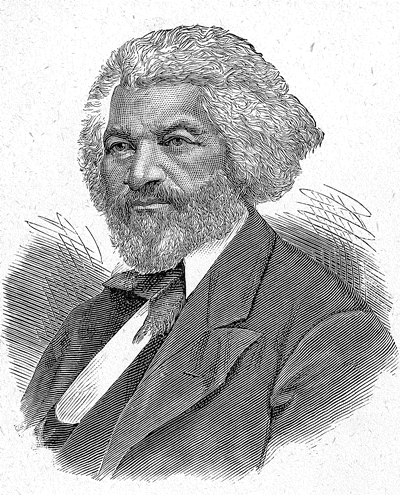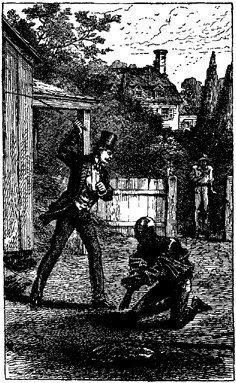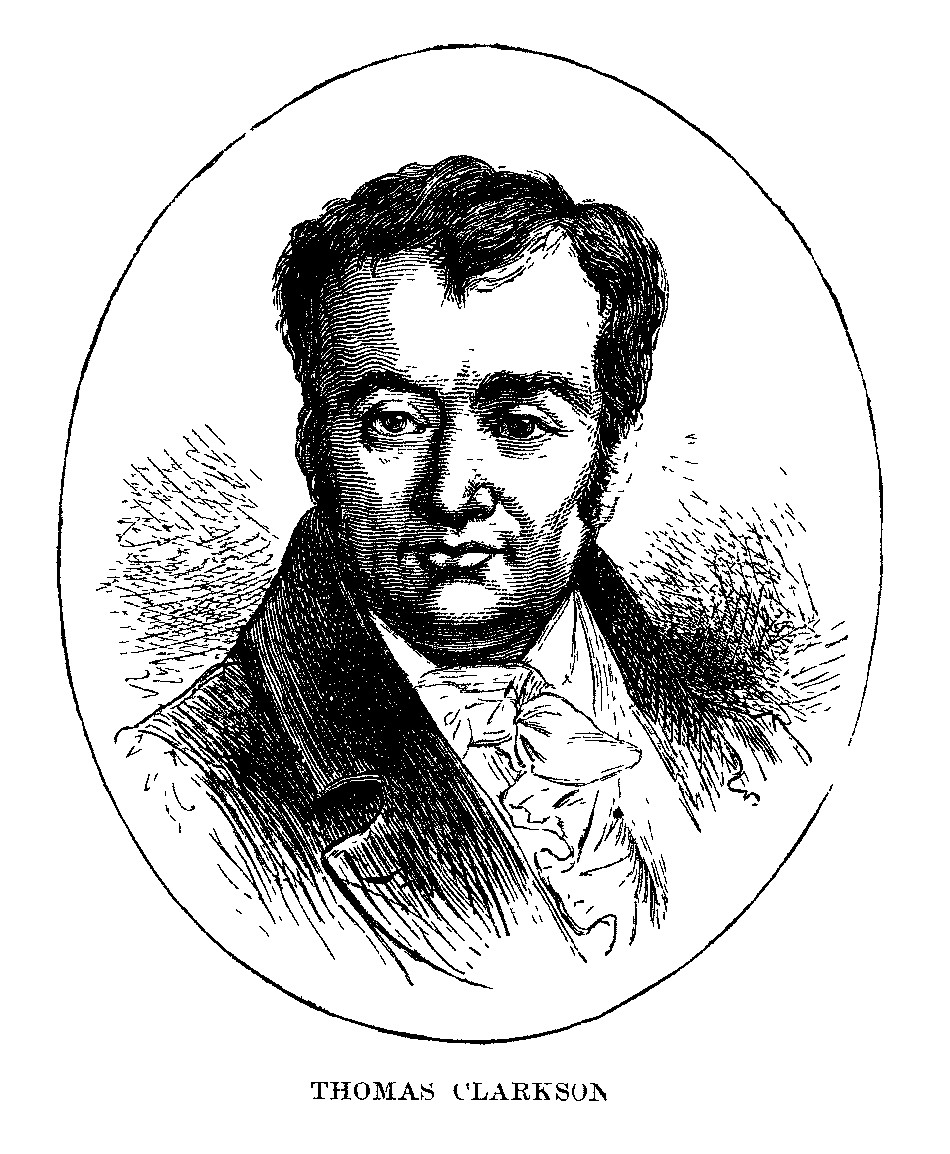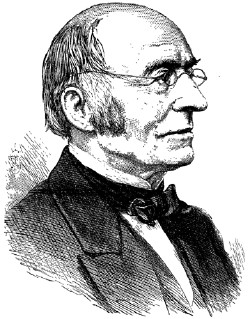Frederick Douglass and Abolition
 |
There are numerous illustrations in the British edition of the Frederick Douglass autobiography. They are of three types: pictures of famous abolitionists, Douglass visiting graves and memorials of those who had struggled against slavery, and horrifying pictures of the treatment of slaves. Here is a selection. |

|
"Whipping Old Barney" This image depicts the whipping of an enslaved man named Barney by Governor Edward Lloyd of Maryland. Douglass witnessed this act of cruelty and described it in his 1854 autobiography, The Narrative of the Life of Frederick Douglass, and again in his 1881 autobiography, The Life and Times of Frederick Douglass 1817-1882. “One of the most heart-saddening and humiliating scenes I ever witnessed was the whipping of old Barney by Col. Lloyd. These two men were both advanced in years; there were the silver locks of the master, and the bald and toil-worn brow of the slave—superior and inferior here, powerful and weak here, but equals before God. “Uncover your head,” said the imperious master; he was obeyed. “Take off your jacket, you old rascal?” and off came Barney’s jacket. “Down on your knees!” down knelt the old man, his shoulders bare, his bald head glistening in the sunshine, and his aged knees on the cold, damp ground. In this humble and debasing attitude, that master, to whom he had devoted the best years and the best strength of his life, came forward and laid on thirty lashes with his horse-whip.” - Life and Times |
 |
Thomas Clarkson, the English abolitionist Thomas Clarkson (1760 - 1846) was an English abolitionist who was a part of the fight against the slave trade in the British Empire. He was instrumental in helping to achieve the passage of the Slave Trade Act 1807 which ended Britain’s slave trade. By the 1840s, he was speaking out against slavery worldwide, especially in America. |

|
William Lloyd Garrison, the American abolitionist William Lloyd Garrison (1805 - 1879) was a journalist, abolitionist, suffrage activist, and social reformer. He founded his antislavery newspaper, The Liberator, in 1831 and continued to publish it until the passing of the 13th Amendment in 1865. Douglass mentions in his autobiography how important it was to him when he first escaped slavery. “I had been living four or five months in New Bedford when there came a young man to me with a copy of the Liberator, the paper edited by William Lloyd Garrison, and published by Isaac Knapp, and asked me to subscribe for it. I told him I had but just escaped from slavery, and was of course very poor, and had no money then to pay for it. He was very willing to take me as a subscriber, notwithstanding, and from this time I was brought into contact with the mind of Mr. Garrison, and his paper took a place in my heart, second only to the Bible.” - Life and Times |

|
Harriet Beecher Stowe Harriet Beecher Stowe (1811 - 1896) was an American author and abolitionist. She is best known for writing Uncle Tom’s Cabin (1852) which describes the harsh conditions endured by enslaved African Americans. Douglass honors her, along with others, in his 1881 autobiography. Douglass honors her, along with others, in the chapter titled “Honour to whom honour” in his 1881 autobiography - Life and Times |

|
John Brown John Brown (1800 - 1859) was an American abolitionist who believed that slavery should be overcome radically by force. He was a very religious man and believed he was being an “instrument of God.” He, along with his sons and other volunteers, led many bloody encounters across the nation in the fight against slavery. His last fight was his most famous, the Raid on Harpers Ferry. Douglass wrote this about Brown’s capture: “Three out of the nineteen invaders were captured while fighting, and one of them was Capt. John Brown—the man who originated, planned, and commanded the expedition. At the time of his capture Capt. Brown was supposed to be mortally wounded, as he had several ugly gashes and bayonet wounds on his head and body, and apprehending that he might speedily die, or that he might be rescued by his friends, and thus the opportunity to make him a signal example of slaveholding vengeance, would be lost, his captors hurried him to Charlestown, ten miles further within the border of Virginia, placed him in prison strongly guarded by troops, and before his wounds were healed he was brought into court.” - Life and Times |

|
President Abraham Lincoln Abraham Lincoln (1809 - 1865) was the president of the United States during the Civil War. He was antislavery more than he was an abolitionist. He would support gradual emancipation in 1852; however, after the passage of the Kansas-Nebraska Act (1854), he sought to prevent slavery from expanding. Because he issued the Emancipation Proclamation, he became known as “the great emancipator.” In his autobiography, Douglass describes his first meeting with Lincoln. “I shall never forget my first interview with this great man. I was accompanied to the executive mansion and introduced to President Lincoln by Senator Pomeroy. The room in which he received visitors was the one now used by the president’s secretaries. I entered it with a moderate estimate of my own consequence, and yet there I was to talk with, and even to advise, the head man of a great nation. Happily for me, there was no vain pomp and ceremony about him. I was never more quickly or more completely put at ease in the presence of a great man, than in that of Abraham Lincoln.” - Life and Times |